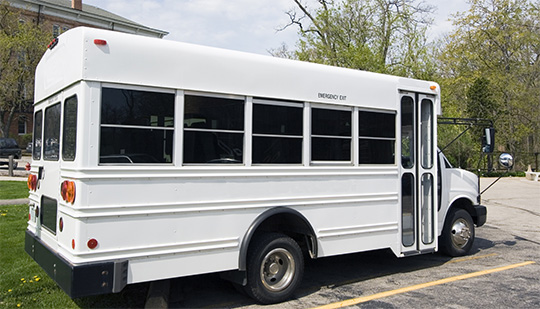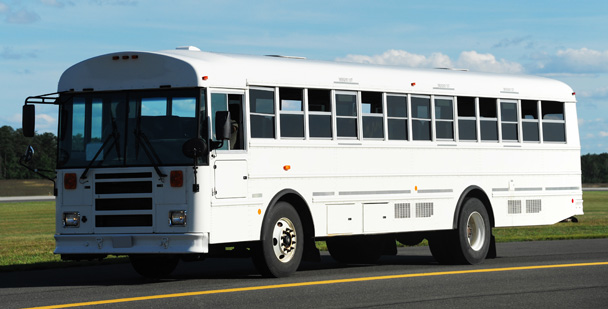On this page
- Canadian Motor Vehicle Safety Standards (CMVSS)
- Specific CMVSS for school buses
- Multifunction School Activity Buses
- Contact Motor Vehicle Safety
Canadian Motor Vehicle Safety Standards (CMVSS)
The Canadian Motor Vehicle Safety Standards that apply to school buses help to maintain:
- child passenger and pedestrian safety
- school bus driver visibility
- overall crashworthiness of school buses
- ability to control traffic
We have applied over 40 of these standards to the design and construction of new school buses used in Canada. The standards have:
- a broad set of requirements unique to school buses, including for:
- high-padded seatbacks that cushion the impact in a crash
- emergency exits
- body strength requirements
- traffic control devices
- requirements that other types of vehicles also need to meet (for example, on lighting, braking and flammability of materials)
School buses protect passengers through “compartmentalization”. This design has:
- seats with high backs
- seats filled with energy-absorbing material
- seats placed close together to form compartments
- strong seat anchorages
As of September 1st, 2020, a school bus equipped with seat belts will need to meet the technical requirements for installation under the Motor Vehicle Safety Regulations and cannot be equipped with lap belts only.
Specific Canadian Motor Vehicle Safety
Standards (CMVSS) for school buses
Specific Canadian Motor Vehicle Safety
Standards (CMVSS) for school buses
Standards (CMVSS) for school buses
Standards (CMVSS) for school buses
These Canadian Motor Vehicle Safety Standards specifically apply to school buses in Canada:
School bus pedestrian safety devices (CMVSS 131)
- School buses are required to be equipped with at least one stop signal arm
- A stop signal arm helps control traffic when a school bus is stopped during pick up and drop off
- The stop signal arm must have flashing lights and operate when the bus is stopped to pick up and drop off children
Rollover protection (CMVSS 220)
- Limits the possibility of a roof collapsing in a rollover
- Requires school bus roofs to have a certain amount of strength if a force one and a half times the weight of the school bus is applied to the roof of the school bus
School bus body joint strength (CMVSS 221)
- Helps prevent body joints from coming apart in a collision (which could cause sharp edges to enter the bus's interior)
- Requires school bus body joints to have a certain amount of strength
- A pulling force is applied to a test sample of each body joint
School bus seating and crash protection (CMVSS 222)
- Provides occupant protection through compartmentalization which can be complemented with proper use of seat belts
- Requires compartmentalization – high seat backs, padded with energy-absorbent material and spaced closely together
- Sets a minimum seat back height
- Requires performance tests for seats
- Requires seat belts to meet certain standards, if they are installed on a school bus
- Allows for either fixed or flexible seat belt configuration, based on the size of passengers
- Permits only 3-point lap and shoulder belts, which need to meet requirements similar to seat belts in other vehicles
Mirrors and rear visibility systems (CMVSS 111)
- Helps the driver see children who are close to the bus during drop off and pick up
- Requires school bus-specific mirrors
- Prescribes specific mirror types and tests field of view
Lighting systems and reflective devices (CMVSS 108)
- Helps control traffic during on-route stops
- Requires school buses to have flashing lighting systems
- Lights must operate when the bus is stopped to pick up or drop off children
Bus window retention, release and emergency exits (CMVSS 217)
- Requires: window retention
- helps with compartmentalization by making sure no openings are made in the bus by a window coming out
- windows are required to stay in their window frame when a force is applied to the window
- Requires emergency exits, including side emergency exits, the large rear door and roof hatch
- help passengers exit quickly in emergencies by setting the number, size and location of emergency exits in a school bus
Fuel system integrity (CMVSS 301)
- Reduces risks associated with fuel leaks or fuel system failure in a crash
- Requires crash testing of all school buses
- Sets maximum fuel leakage and system integrity requirements after crash tests
Liquid propane gas and compressed natural gas fuel system integrity (CMVSS 301.1 and 301.2)
- Reduces risks associated with fuel leaks or fuel system failure in a crash
- Requires crash testing of all school buses (other vehicles may follow installation requirements instead of crash testing)
- Sets maximum fuel leakage, minimum fuel system pressure loss and system integrity requirements after crash tests
Learn about safety standards that apply to vehicles, tires and child car seats
Multifunction School Activity Bus
(MFSAB)
Multifunction School Activity Bus
(MFSAB)
(MFSAB)
(MFSAB)
Multifunction school activity bus
A multifunction school activity bus (MFSAB) is a school bus that is used to pick up and drop off students under circumstances in which there is no need to control the traffic.
These vehicles are not intended to be used on multiple stop routes like typical school buses. They are meant specifically for transporting passengers on extra-curricular trips that typically include one pick up location and one destination. For example the destination could be a museum or a sports arena.
Multifunction school activity buses can come in different sizes and are required to meet stringent federal safety standards.
Safety Standards that apply to a MFSAB
The same Canadian Motor Vehicle Safety Standards that apply to a school bus also apply to a MFSAB with two exceptions:
- School bus pedestrian safety devices (CMVSS 131)
- Lighting systems and reflective devices (CMVSS 108)
As a MFSAB is not meant to make on-route stops to pick up or drop off children, it is not required to be equiped with traffic control devices or warning lamps.
MFSAB must meet the same compartmentalization and structural requirements as a typical school bus.
Multifunction school activity bus
As of September 1st, 2020, a MFSAB equipped with seat belts will need to meet the technical requirements for installation under the Motor Vehicle Safety Regulations and cannot be equipped with lap belts only.
The Canadian Standards Association (CSA) standard D250 – School Buses applies various standards to a MFSAB including, among others, the requirement that it not be painted yellow.
Individual Provinces and Territories may have additional requirements regarding what types of vehicle may be used to transport school children.
Contact Motor Vehicle Safety
Toll-free telephone: 1-800-333-0371
Local telephone: 613-998-8616 (Ottawa-Gatineau region)
Email: mvs-sa@tc.gc.ca

